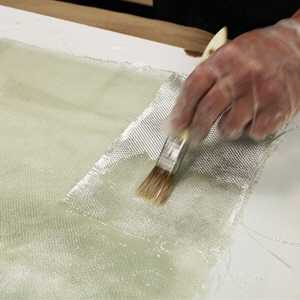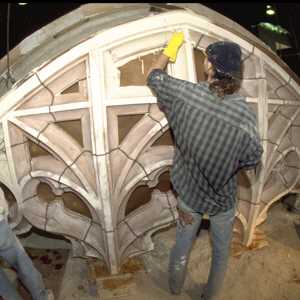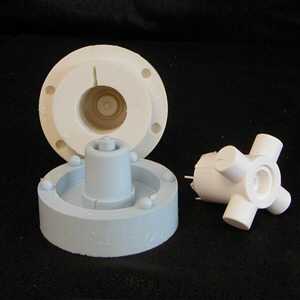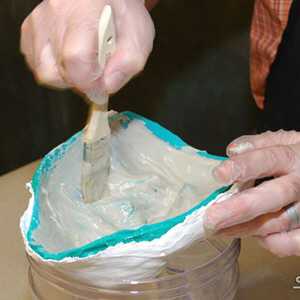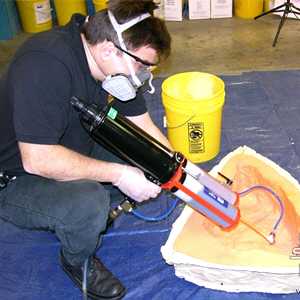- Inicio
- 3D Printers and accessoires
- Moldes y Réplicas
- Siliconas de Estaño
- Siliconas de Platino
- Gomas de Poliuretano
- Alginato
- resinas de Poliuretano
- Espuma de Poliuretano
- Epoxi
- Látex
- Mask Making Latex
- Mold Making Latex
- FormX Elastica
- Monster Makers Kit de Espuma de Látex
- Monstermakers Mask making latex RD-407
- Monstermakers additives & Components
- Holden's HX-200™ Coating/Dipping Latex
- Holden's Brushable HX- Body Latex™
- Holden's Mold Making Latex HX-80™
- Holden's Mold Making Latex High Viscosity HX-974™
- Holden's Mask Making Latex - Pourable HX-407™
- Holden's Mask Making Latex - Brushable HX-807™
- Holden's Cosmetic Latex™
- Holden's Frisket Mask Latex
- Holden's HX-Injection Medium™
- Latex Accessories
- Latex Pigments
- Latex Paint
- Latex Thickener
- Yeso y Hormigón
- Poliester
- AcrylCast
- Fundición Prince August
- Jesmonite sistema acrílico
- Modelar
- Buddy Rhodes Sistema de Hormigón
- Sellar y Despegar
- Pigmentos
- Jesmonite Pigments
- Pure Pigments
- Ultra Fine Pigments
- Silc Pig™ pigmentos
- Glow Worm™ Pigmentos
- Cryptolyte™
- Silc Pig™ Eléctrico
- SilTone
- SilTone Kits
- FuseFX pigmentos de silicone
- Silicone Coloring System S.A.M
- Key-Pigments Silicone Pigments
- Flock fibras
- Latex Pigments
- Polyester Pigmentos
- UVO Pigmentos resistentes al UV
- Tintes SO-Strong™
- Tintes Ignite™
- Real Metal Powders
- Faux Metal Powders
- Cast Magic™ Polvos
- Pinturas
- Rellenos & Refinamiento
- Aditivos
- Disolventes y diluyentes
- Adhesivos
- Herramientas
- Equipos
- Maquillaje
- máscara de goma pintura de grasa
- Skin Illustrator Paletas
- Skin Illustrator líquido
- Fleshtone 60ml
- Fleshtone 120ml
- Dark Fleshtone 60ml
- Dark Fleshtone 120ml
- FX 60ml
- FX 120ml
- FX 240ml
- Complexion 60ml
- Complexion 120ml
- Alchemy 60ml
- Alchemy 120ml
- Grunge 60ml
- Grunge 120ml
- Grunge 240ml
- Mardi Gras 60ml
- Mardi Gras 120ml
- Necromania 60ml
- Mekash Colors 60ml
- Clear Gloss 60ml & 120ml
- Glo-Worm 60ml & 120ml
- Tattoo Classic 60ml & 120ml
- Sunburn
- Alphabetical all
- Skin Illustrator Individual
- Skin Illustrator Glazing Gels
- Skin Illustrator Concentrates
- Skin Illustrator Glazing Spray
- Skin Illustrator Mouth FX
- Allied FX (Blue Bird)
- RipperFX Palettes
- Stacolor Paletas de Maquillaje
- PAX - Pinturas Thom Suprenant
- Tattoo
- MaqPro Farde Palettes
- MaqPro Make-Up Mixer
- MaqPro Creamy
- Pinceles Maquillaje
- MaqPro Bruise Gel
- Old Age Stipple
- Sponges and Applicators
- Stamps & Molds
- Head Armatures
- FormX Tools
- Kryolan maquillaje
- efectos especiales
- material protésico
- Ayuda para elegir
- FormX Academy
- Marcas
- Literature
Smooth-Sil ™ 960 /1kg
Smooth-Sil 950
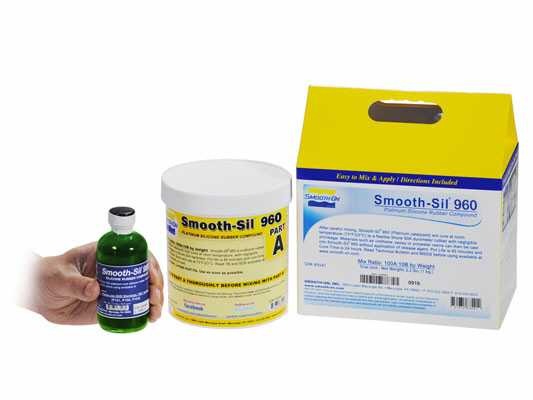
Smooth-Sil ™ 960 es un caucho de silicona curado con platino Shore 60A desarrollado para una variedad de aplicaciones industriales. En comparación con otras siliconas de platino 60A, Smooth-Sil ™ 960 tiene una viscosidad relativamente baja y es fácil de mezclar, quitar el aire y verter. La silicona cura en 16 horas con una contracción insignificante a una goma firme con alta resistencia a la tracción y al desgarro.
Smooth-Sil ™ 960 ofrece una buena resistencia química y al calor, lo que lo convierte en una buena opción para la producción de fundición de resinas y espumas expansivas.
Debido a su firmeza, los moldes Smooth-Sil ™ 960 también se utilizan para centrifugado. También se utiliza para aplicaciones eléctricas y de empotrar.
Smooth-Sil ™ 960 es adecuado para aplicaciones relacionadas con alimentos.
Nota: este producto no curará contra superficies que contengan azufre, incluso cuando estén selladas.
Instructions
Safety - Use in a properly ventilated area (“room size” ventilation). Wear safety glasses, long sleeves and rubber gloves to minimize contamination risk. Wear vinyl gloves only. Latex gloves will inhibit the cure of the rubber.
Store and use material at room temperature 23°C. Warmer temperatures will drastically reduce working time and cure time. Storing material at warmer temperatures will also reduce the usable shelf life of unused material. These products have a limited shelf life and should be used as soon as possible.
Cure Inhibition - Addition cured silicone rubber may be inhibited by certain contaminants in or on the pattern to be molded resulting in tackiness at the pattern interface or a total lack of cure throughout the mold. Latex, sulfur clays, certain wood surfaces, newly cast polyester, epoxy, tin silicone rubber or urethane rubber my cause inhibition. If compatibility between the rubber and the surface is a concern, a small-scale test is recommended. Apply a small amount of rubber onto a non-critical area of the pattern. Inhibition has occurred if the rubber is gummy or uncured after the recommended cure time has passed. To prevent inhibition, one or more coatings of a clear acrylic lacquer applied to the model surface is usually effective. Allow any sealer to thoroughly dry before applying rubber.
Even with a sealer, Smooth-Sil™ 960 will not cure against surfaces containing sulfur. If you are not sure if your clay contains sulfur, do a small compatibility test before using for an important project.
Applying A Release Agent - Although not usually necessary, a release agent will make demolding easier when casting into most surfaces. Ease Release® 200 is a proven release agent for releasing silicone from silicone or other surfaces. Mann Ease Release® products are available from formX.
Because no two applications are quite the same, a small test application to determine suitability for your project is recommended if performance of this material is in question.
MEASURING & MIXING...
Before you begin, pre-mix Part A and Part B thoroughly. Mix ratio is 100A : 10B by weight. Using a gram scale, dispense required amounts of parts A and B into a mixing container and mix for 3 minutes. Scrape the sides and bottom of the container several times.
After mixing parts A and B, vacuum degassing is recommended to eliminate any entrapped air. Vacuum material for 2-3 minutes (0,98 bar), making sure that you leave enough room in container for product expansion.
POURING, CURING & PERFORMANCE
Pouring - For best results, pour your mixture in a single spot at the lowest point of the containment field. Let the rubber seek its own level. A uniform flow will help minimize entrapped air. The liquid rubber should level off at least 1.3 cm over the highest point of the model surface.
Curing - Allow rubber to cure for 16 hours at room temperature 23°C before demolding.
Heat Curing - Time to demold can be reduced with mild heat. Example: After pouring Smooth-Sil™ 960 at room temperature, place the mold in a hot box or industrial oven at 60°C. This will reduce the demold time.
Note - time will vary depending on mold thickness.
Adding an appropriate amount of Plat-Cat® cure accelerator will also reduce demold time. The pot life and cure times can be extended using Slo-Jo® cure retarder. Do not cure rubber where temperature is less than 18°C.
Mold Performance & Storage - The physical life of the mold depends on how you use it (materials cast, frequency, etc.). Casting abrasive materials can quickly erode mold detail, while casting non-abrasive materials such as wax will not affect mold detail. Before storing, the mold should be cleaned with a soap solution and wiped fully dry. Two part (or more) molds should be assembled. Molds should be stored on a level surface in a cool, dry environment.
Ayuda para elegir
Todos nuestros productos enumerados por aplicaciones: "Lifecasting", Escultura, Moldes, Fundición, Maquillaje FX, Réplicas, Dientes y Kits de aprendizaje.
su ventanilla única para materiales de modelado en 3D
